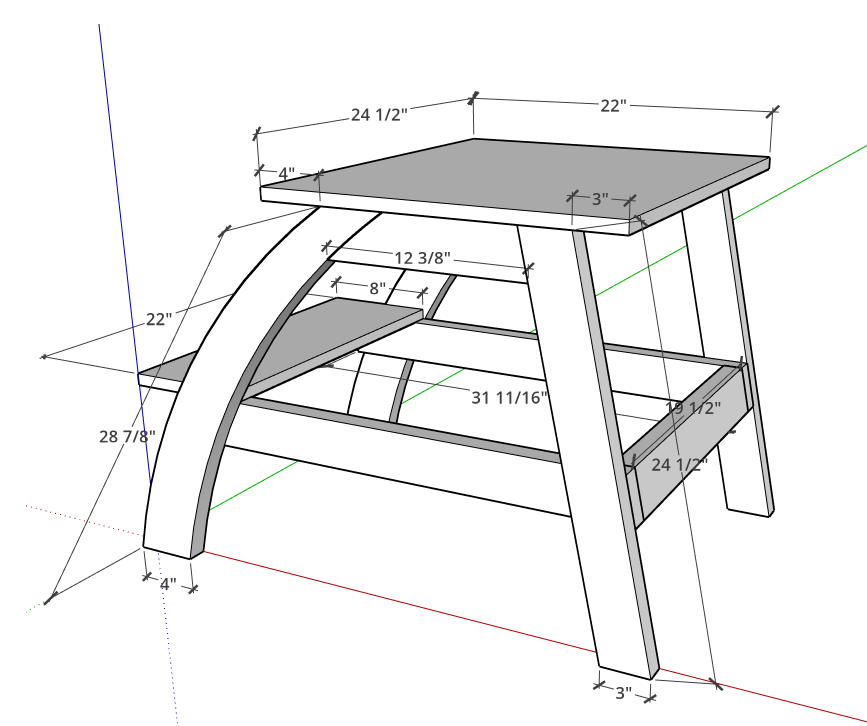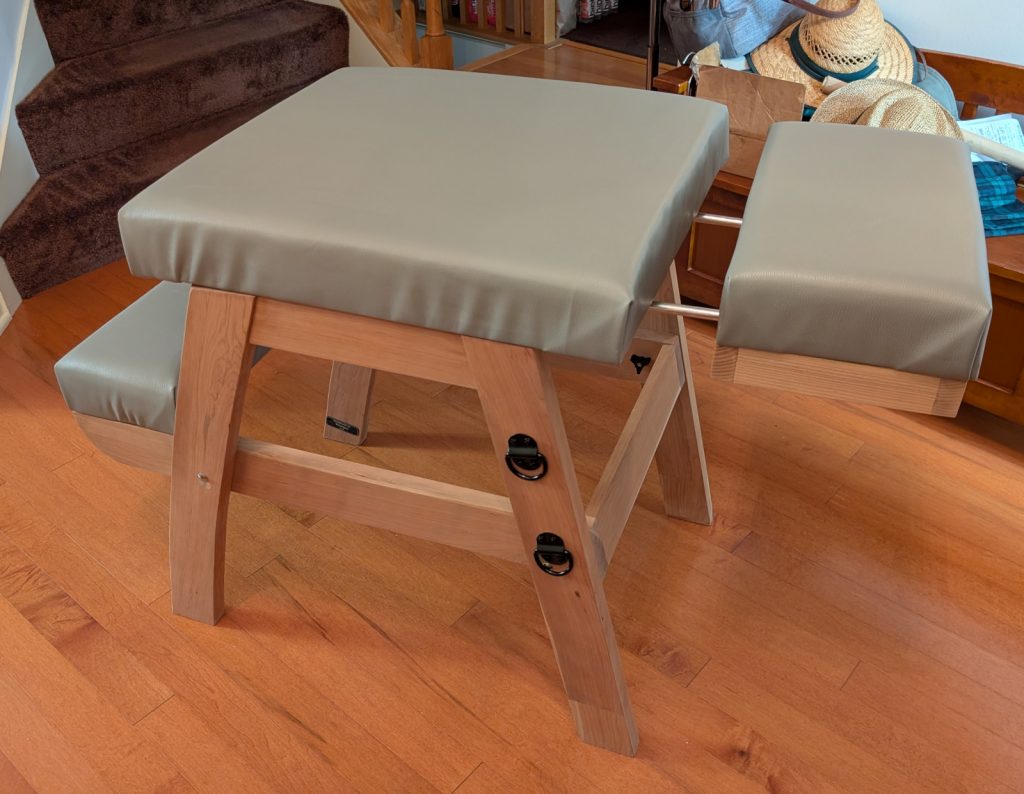
Part 2: Spanking Benches
Once I had the crosses done, I moved on to the next item, which was two spanking benches. I ended up doing two different styles on this, one bench for “normal size” and smaller people and one for larger people.
Smaller bench

The smaller bench is designed to fold up so it can be easily stored and carried. The “victim” kneels on the step at the front, folds their body over the top, and is secured by the wrists to the stock at the bottom. I had a photo of a real working bench to start with but had to figure out all the dimensions myself.
I still had plenty of heat-treated ash, so I used that for this project too. There are two pairs of legs — one supporting the top and one stretching down at a very raked angle to the floor. The kneeler sits on top of support arms which are cut at an angle to tuck in under the fixed piece. The stock simply sits in place, but is held by two spring-loaded bolts at the bottom; it can be adjusted depending on the length of the person’s arms and there are two sets of holes for larger or smaller wrists.
There was a lot of fussing with the fit of the pieces on this one. I started out with it dry-fitted in sections, and found that I needed to adjust things a little. The original legs were too short and too low; I made longer ones and raised them up, along with the kneeling surface, until it seemed like a better fit. (A volunteer helped me get the proportions right.)

At this point I had some more people get on the bench — or, more accurately, try to — to check the design. It had some flaws. The moment anyone knelt on the front it wanted to squash flat; that wouldn’t do. So I added a length of chain between the front and rear legs (two, actually) to limit that travel and keep it upright. That worked pretty well, but now if someone kneels it tries to tip backward until their body weight shifts to the top. I could try putting a heavy metal bar or weight under the front legs, but that would make the bench very hard to fold up and carry because of the weight. For now, I’m settling for advising people to put weight on the top first, then put their knees on the step.

That worked, so I applied Arm-R-Seal (again, I assume this will be subject to a fair amount of abuse) and sent two more boards to the upholsterer. This time I did get a photo of the finished bench with upholstery.

It’s not perfect — the chains and upholstery actually keep it from folding completely shut. But it should serve the purpose fairly well.
Knock-down Bench

This one came entirely from my own brain. It is similar to the folding bench in that the posture of the “victim” is the same — they kneel on the front and lay their upper body down on the large top — but this bench is designed to disassemble rather than folding up.
I did not have enough ash left to make this, so I bought some cherry instead. I always love working with cherry.
The legs came first on this, because the curving rear legs and angled front legs define how the piece will sit. Each front/back leg pair and the stretcher at the top represents one “piece” of the whole, and the rails that support the kneeling surface is another piece. The top fits down and is held by gravity and unglued dominos. When disassembled the four pieces fit neatly together and take up relatively little space.
For the mechanical joints I used carriage bolts and more star knobs, which makes this very strong and stable, and ideal for larger playmates. I also added a third padded piece for the user’s head, which connects to the front by slipping aluminum rods into holes and then tightening down bolts to hold it in place. I had a few extra “hard points” left over from the crosses, so I put two on each front leg for convenience.

I am much happier with this design than the folding bench. The only thing I would do differently if I did another one is that I would have made the back legs more curved. I didn’t have a good way to transfer the part design from Sketchup to the real world, and it came out too straight.








Recent Comments